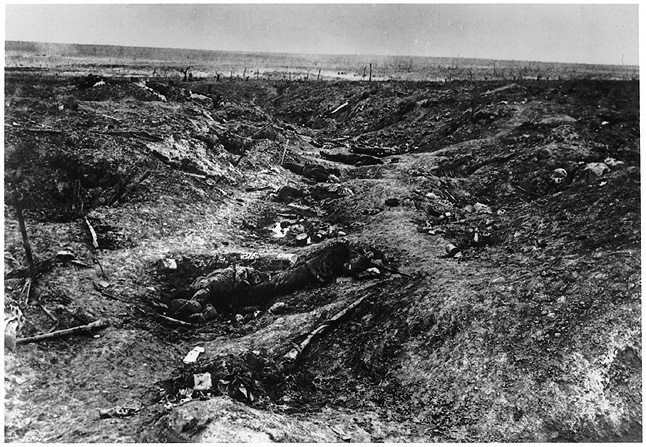

German positions near Guillemont, September 1916. By September 1916, the British were using far more artillery for a given amount of German line than they had earlier in the year. This photo shows two results: the first is a substantial number of German casualties, and the second is that the Germans were frequently only holding a line of shellholes rather than trenches with dugouts. While a shellhole line was harder for the British to identify on aerial photographs or from ground observation posts (and thus harder to shell accurately), it offered much less protection, and a large number of small shells could inflict heavy casualties.
Yet the heavy bombardments cut both ways. The delays involved meant the Germans had time to reinforce their artillery and prepare to blast the British troops. The Somme fighting was rife with attacks and counterattacks.
Source: IWM photo Q1165.